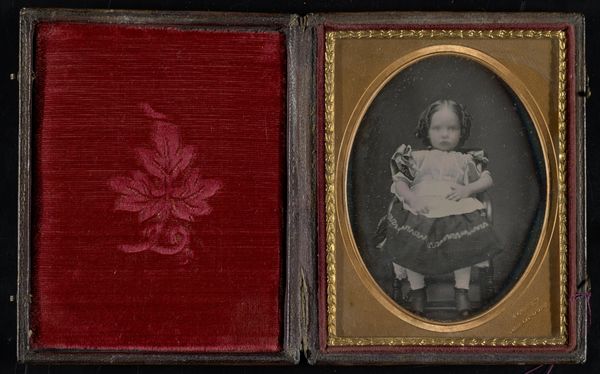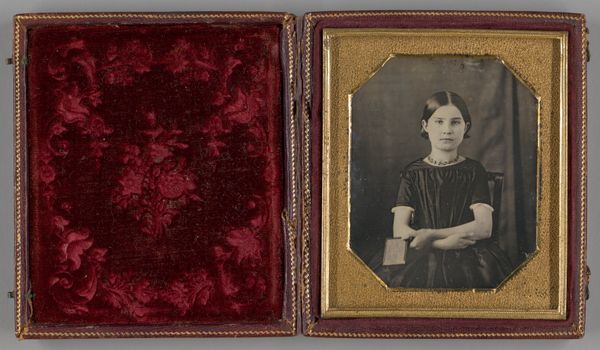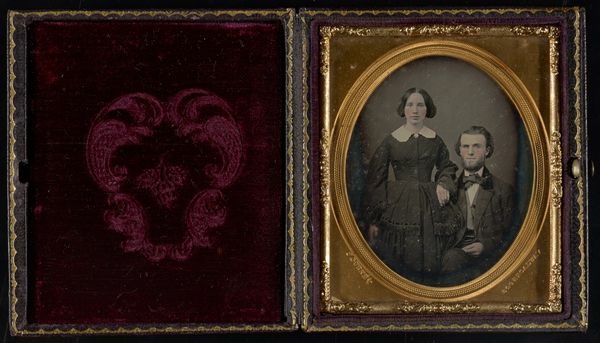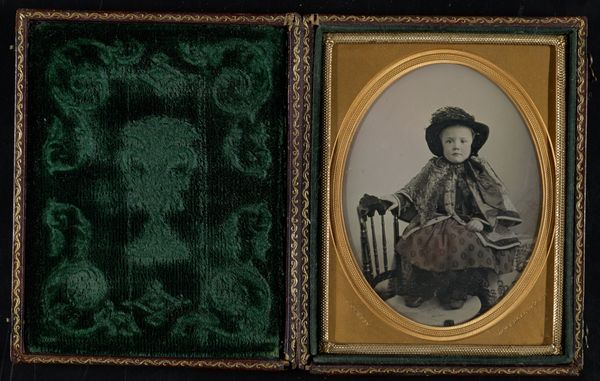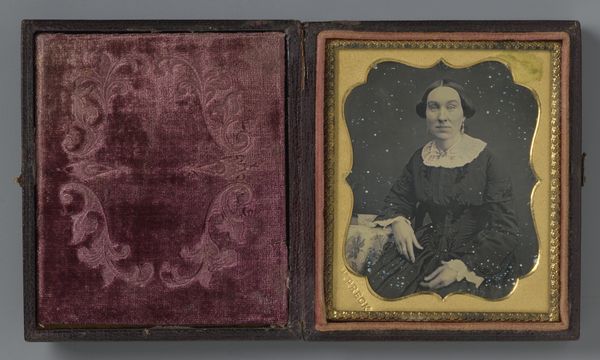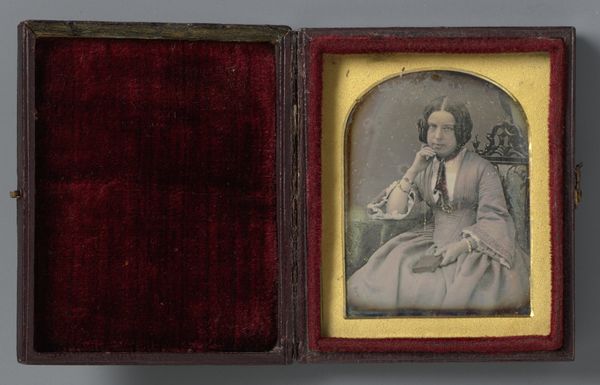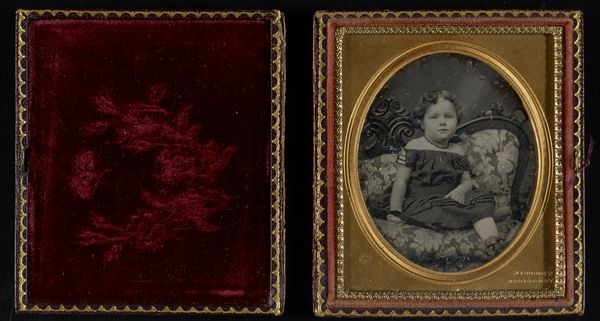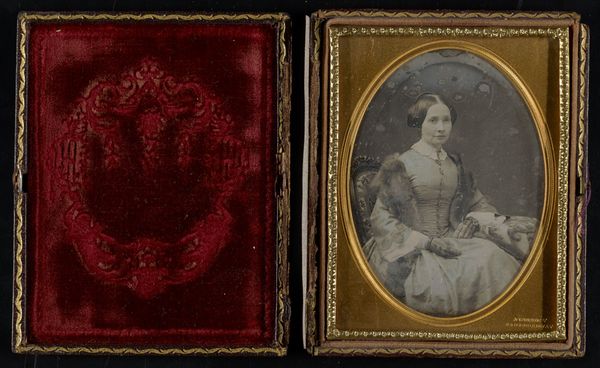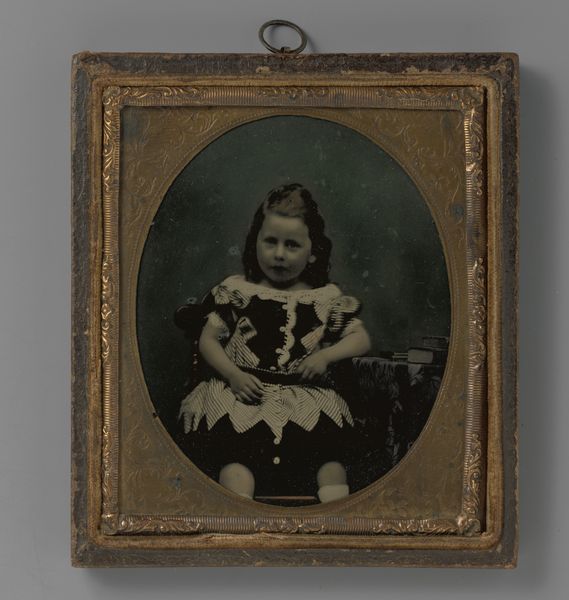
daguerreotype, photography
#
portrait
#
daguerreotype
#
photography
#
coloured pencil
#
genre-painting
Dimensions: height 76 mm, width 64 mm, height 93 mm, width 79 mm
Copyright: Rijks Museum: Open Domain
Curator: Here we have an anonymous daguerreotype, likely made sometime between 1855 and 1870, titled "Portrait of an Unknown Girl." It's surprisingly well-preserved. Editor: The ornate case and the delicate rendering of the subject give the piece an antique preciousness, but the girl's piercing gaze unsettles me. How do you approach interpreting this? Curator: What intrigues me most is not necessarily the subject, but the process itself. Think about the labor and resources required for even a "simple" portrait like this at the time. Daguerreotypes were revolutionary but still a relatively exclusive technology. Who had access to this kind of representation, and under what circumstances? Editor: So, less about the girl and more about the… system that allowed for the creation of the image? Curator: Precisely. The image becomes a document of social stratification, of emerging visual technologies, and the complex relationship between art, industry, and commerce in the mid-19th century. Editor: That’s a really interesting perspective. It never occurred to me to consider who profits and who labors to bring the technologies, like daguerrotypes, to life. Curator: It invites a new way to read portraiture itself – not as just a depiction of an individual, but as a record of production, access, and social power. Also notice, by the way, how she is posed seated, maybe drawing connections to power and high-class representation in paintings that preceded photography. Editor: I see what you mean. So much history captured in the production itself. Thanks, it makes me think differently about art’s role in visualizing economic divides. Curator: Exactly, it all becomes an invitation for us to inspect social relations around labour and resources within our contemporary milieu too.
Comments
No comments
Be the first to comment and join the conversation on the ultimate creative platform.
